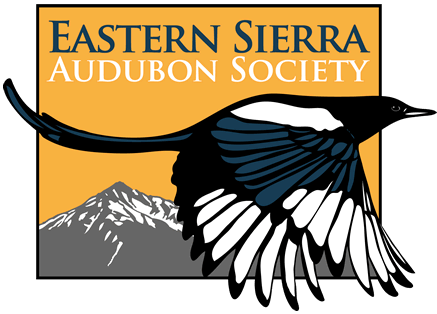The California Bird Records Committee (CBRC) is the official body that oversees the rare bird records in the state. Most states have such bodies, which are made up of experienced, dedicated birders from widely scattered parts of the state who are familiar with the status, distribution, and identification of birds found there.
The CBRC is composed of ten members who serve one term of three years and then sit out at least one year before being eligible for re-nomination. The secretary is presently a non-voting member with a one year term but can serve an unlimited number of terms. Jon Dunn of Rovana and Kristi Nelson of Lee Vining represent our local area. Three of the four who were just elected are neophytes to the committee. Every effort is made to have different areas within the state represented as well as finding new members with expert ability in and knowledge of field identification of birds as well as being a member of Western Field Ornithologists in CA. Any policing organization takes heat for bad decisions, and the CBRC receives its share, but most charges are based on the same differences of opinions and philosophies that are represented within the committee itself.
The CBRC has published a list of species that have been recorded so rarely in the state that any claims of sightings must be submitted for evaluation (see http://www.wfo-cbrc.org/cbrc/review.html). If one observes a listed bird and wants it accepted as an official record, they are required to provide documentation and send it to the secretary. The secretary organizes a package containing 15-18 records and sends them to the first CBRC member on the list who reviews the records. When finished he/she sends the package on to the second member listed while sending the Acceptance/Rejection comments to the secretary. On the first round, the reviewers do not see the comments of the other members, and no discussion is allowed about a specific record between members who have not yet reviewed the record. A record must receive nine accept votes to pass. If two members are not convinced by the documentation of the correct identification, the record is rejected. If identification is unquestioned, but natural occurrence is, it takes three reject votes to reject the record. Re-circulation of any record is up to the discretion of the secretary, or a request by any reviewer. Any reviewer may ask that it be discussed at the annual meeting, and the decision at the meeting is final. It differs from year to year, but 200-250 records pass through the committee annually. The average acceptance rate oscillates between 70-80%, which reflects not only the philosophical composition of the committee but the quality of documentation received.
Some become upset when the committee does not accept their observation but they must realize that this usually reflects on the quality of the documentation, not on whether or not they correctly identified the bird. On occasion, the observers may have been unfamiliar with the diagnostic characteristic that would have insured the sightings acceptance, and either did not notice it, or did not describe it. Some of the sightings submitted were incorrectly identified birds (some with unequivocal pictures), and the value of keeping these out of the literature is of critical importance. Few committee members can claim that they have never had any observation rejected, so the argument that committee members always accept each others sighting is baseless. The service rendered by this committee allows science to benefit from those who may lack professional ornithological credentials, but not the passion for knowledge and accuracy.
With the growth of citizen scientists, and a massive influx of birders and field ornithologists, it is possible to add to the ornithological body of information on status and distribution without the need to collect every bird to prove where it was seen and when. Many bird records are based on photographs, video and audiotapes as well as written documentation. An observer of a rare or less often seen species must write a convincing description telling the circumstances of the event including how long the bird was seen, the distance to the bird, lighting conditions, time of day, etc. An online electronic report form is at www.wfo-cbrc.org/cbrc/cbrcform.html. Also included should be how the observer eliminated a similar looking and more common species, and any photographs or tapes taken of the bird. The rule is the more rare the species is, the more out of season it is, the more difficult it is to separate from a similar looking species, the more detail must be provided.
The results are published annually in Western Birds, the journal of Western Field Ornithologists. The rejected sightings are of particular interest because the reason for rejection often provides cutting-edge knowledge that is not yet published in any field guide.
Rare bird photos taken from submitted records are at www.wfo-cbrc.org/cbrc/photos/index.html. Of the current 170 reviewable species, 39 have been recorded in Inyo County, representing 23% of the total list. A number of Inyoites have followed the protocol for changing a personal, exciting, sighting into a scientific record insuring the advancement of ornithological knowledge in the County and Stateand none have a Ph.D. in ornithology!
Tags: owl
